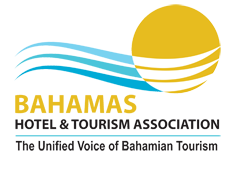Nassau/P.I. Hotels Record 11% Rate Increase
Robert Sands told Tribune Business that when it came to assessing Bahamian industry performance it was impossible to “look at just one side of the scale”, pointing out that besides costs, indicators such as average occupancy and total revenues also needed to be factored in.
While the 2010 third and fourth quarters, containing the traditionally slowest months of September and October, were not forecast to be worse than 2009 comparatives, Mr Sands said the industry was still some way from attaining the pre-recession 2008 and 2007 numbers.
He was responding after The Hotel Price Index, published by the hotels.com website, appeared to show there was some firmness coming back into Nassau and Paradise Island room rates during the 2010 second quarter.
For the three months to June 30, 2010, room rates in Nassau were said to have increased by 11 per cent year-over-year, from $168 in the 2009 second quarter to $186.
This increase was matched by Paradise Island, according to the Index, where average daily room rates increased by 11 per cent, going from $363 in the 2009 second quarter to $392 this year. That made Paradise Island the second most expensive resort destination in the Caribbean and Latin American region, bettered by only Hamilton, Bermuda, with a $441 average daily room rate.
Mr Sands said the Hotel Price Index’s figures represented only one quarter, and he did not know the hotels it had employed in its sample to derive the figures. As a result, caution needed to be employed when assessing its figures.
“Our figures tend to be a little more representative of where we are year-to-date,” Mr Sands said of the BHA’s own data. “I would be very cautious in how we promote these results, notwithstanding the gains made to date for August this year. We still have the last two quarters, the most challenging quarters, if this year. We have to tread very carefully.”
Adding that the industry needed to be “cautiously optimistic about this level of growth” achieved for the first eight months of 2010, Mr Sands said the BHA was sticking to its position that this year is one of recovery and minimal improvement, setting the sector back on the path to returning to pre-Lehman Brothers crash numbers achieved in 2008.
Bahamian resorts were “looking for better results in 2011”, and Mr Sands said of projections for the 2010 fourth quarter: “We anticipate it not to be worse than last year, but that is not the yardstick we wish to be measured by. We need to get back to 2008. There are still some bumps in the road for our major markets.
“The message that we don’t want to send to the market is that all is well and we’re back to normal. We continue to make small improvements, but do not have the labour levels we have had in the past.
“While we’re getting increases in average daily room rates, expenses are increasing commensurately. We can’t look at one side of the scale.”
The Hotel Price Index’s figures also indicate that the recovery in Bahamian room rates is patchy, and not being experienced at all properties.
While room rates at Lucaya in Freeport rose by 6 per cent to $219, compared to $206 in the three months to June 30, 2009, the price index found that Cable Beach room rates actually fell by 6 per cent, from $248 to $233.
Mr Sands, though, said the Cable Beach data was not “representative of information I am aware of”.
He added: “You can’t look at room rates only. You have to look at average occupancy and see what occupancy was achieved, and there have been a trade-off on the average rate to gain occupancy. Then you have total revenues. You have to look at statistics in the whole, rather than isolated indicators.”
Freeport suffered the greatest decline in average daily room rates, according to the Hotel Price Index, a 13 per cent fall from $145 in the 2009 second quarter to $126 this time around.
Mr Sands used this to illustrate his point, agreeing that while Grand Bahama was “challenged”, those room rates had to be set against the occupancy levels achieved by the island’s hotels.
“If occupancy grew, there may have been some downward pressure on rates, so you have to look at revenues,” Mr Sands said. “Of course we’d like higher rates, but if you increase room rates by 50 per cent and occupancy decreases by 50 per cent, we absolutely gain nothing. It has to be looked at in context.”
The Tribune
October 12, 2010

